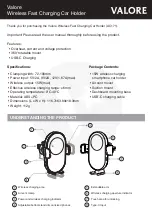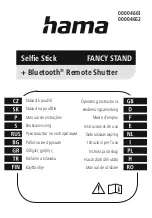
13
Serrated blades of all types can be sharpened in the Chef’sChoice
®
Model 15. However,
use only Stage 3 (Figure 12) which will sharpen the teeth of the serrations and develop
microblades along the edge of these teeth. Generally five (5) to ten (10) pairs of alternat-
ing pulls in Stage 3 will be adequate. If the knife is very dull more pulls will be needed. If
the knife edge has been severely damaged thru use make one fast pull (2-3 seconds for
an 8” blade) in each of the right and left slots of Stage 2, then make a series of pulls in
Stage 3, alternating right and left slots. Excessive use of Stage 2 will remove more metal
along the edge then is necessary in order to sharpen the teeth.
Because serrated blades are saw-like structures, the edges will never appear to be as
“sharp” as the edge on a straight edge knife. However, their tooth-like structure can
be helpful—for example to break the skin on hard crusty foods and penetrate other
materials such as cardboard.
DRESSING OF STROPPING/POLISHING DISKS – STAGE 3
The Model 15 is equipped with a built-in system to manually clean/dress the strop-
ping/polishing disks in Stage 3. In the event these disks become glazed with grease, food
or sharpening debris, they can be cleaned and reshaped by actuating the manual lever on
the rear of the sharpener. This lever is located within a recess as shown in Figure 13 on
the lower left corner as you face the rear of the Sharpener. To actuate the cleaning/dressing
tool, make sure the power is “ON” and simply press the small lever in the recess to the
right, hold about 3-4 seconds and then press to the left and repeat for 3-4 seconds. When
the lever is moved in one direction, the dressing tool cleans and reshapes the active
surface of one stropping/polishing disk. By moving the lower in the opposite direction you
clean the other disk.
Use this clean/dress mechanism only if the Stage 3 white disks are seriously darkened and
when Stage 3 no longer appears to be stropping/polishing well. Using this tool removes
material from the surface of the Stage 3 disks and hence, if used excessively, it will
unnecessarily remove too much of the abrasive surface – wearing the disks out prema-
turely. If that should occur, factory replacement of the disks will become necessary. If you
clean your knives regularly before sharpening you may need to clean or dress the Stage 3
disks less than once a year.


































